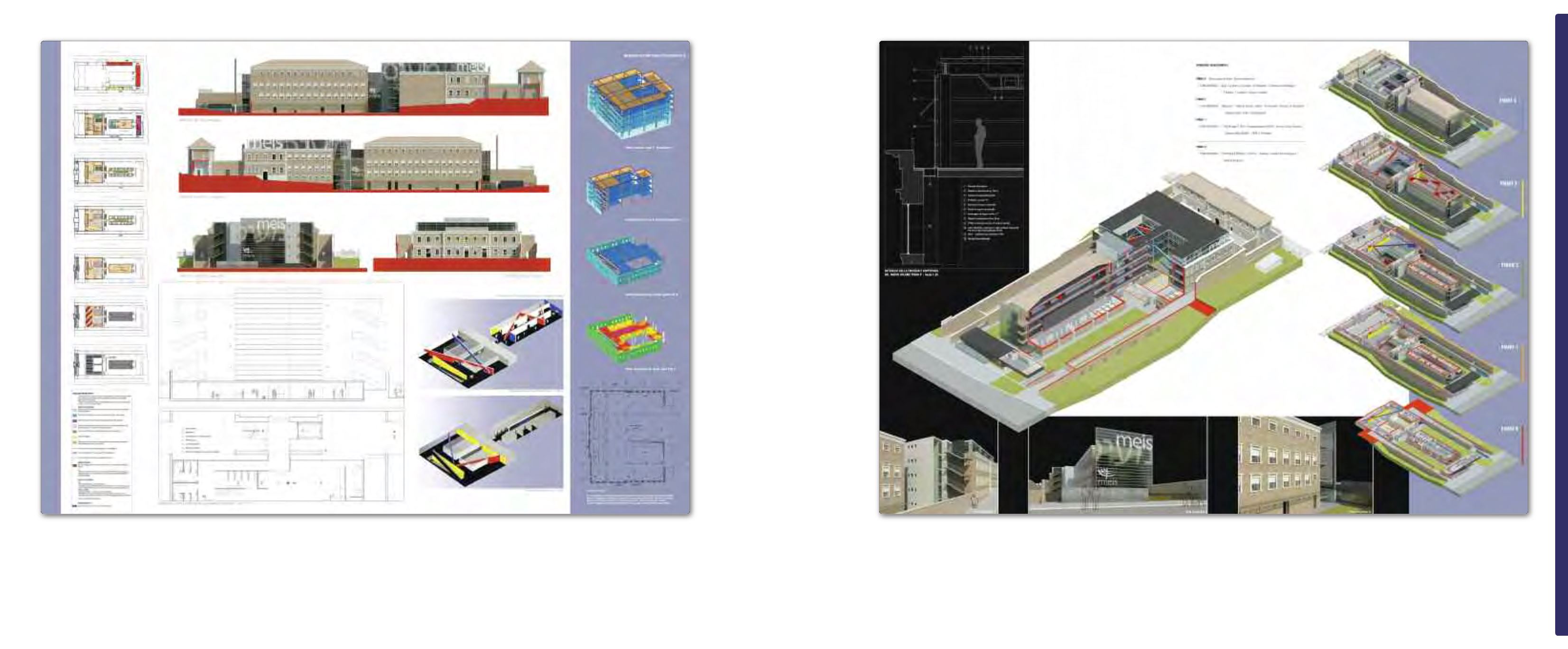
The museum may be seen as an
organism with the ability to overcome
negative associations of incarceration. Its
archaeology and the memory of the
building give new life to a series of spaces
linked by a strong narrative and scientific
charge and dedicated to relating the
multifaceted and complex history of
Judaism.
The second important theme is that
passage through the museum must flow
in the same way that of retelling the
thousand years of history must also flow.
What we mean by flow underscores our
goal of allowing the visitor the ability to
custom design their own visit, creating a
voyage of discovery and exploration
through the museum spaces.
We believe that the function of a museum
is not only to conserve but that it should
also be a centre of research, education,
and knowledge. We believe that the MEIS
should be more than a place for the
historical and scientific study of Judaism
and also be a place of meditation, of joy
and of peace.
Un museo inteso come organismo archi-
tettonico che, nel rispetto dell’archeologia
e della memoria del manufatto, sia in
grado di eliminare l’idea negativa del con-
cetto detentivo in modo da dare vita ad
una serie di spazi connotati da una forte
carica narrativa e scientifica, dedicati al rac-
conto della poliedrica e complessa storia
dell’ebraismo.
Il secondo, importante tema è quello della
fluidità nei percorsi, che vuole andare di
pari passo ad una fluidità nel racconto di
una storia millenaria. Il senso di quella che
abbiamo chiamato fluidità sta nell’inten-
zione di fornire al visitatore la possibilità di
crearsi il proprio percorso, ossia un viaggio
di ricerca e di scoperta degli spazi museali.
Riteniamo, infatti, che la funzione dei
musei debba essere non solo conservativa
ma debba porsi anche come centro di ri-
cerca, di formazione e di conoscenza. Cre-
diamo che il MEIS possa diventare oltre
che un punto di riferimento storico e scien-
tifico dell’ebraismo, anche un luogo di me-
ditazione, di gioia e di pace.


